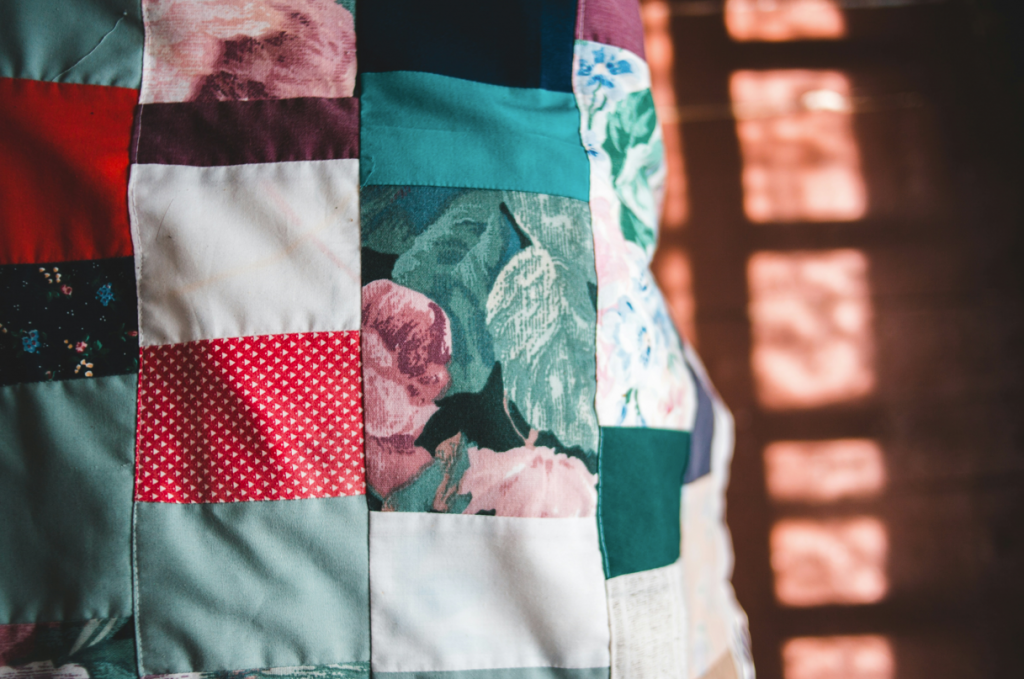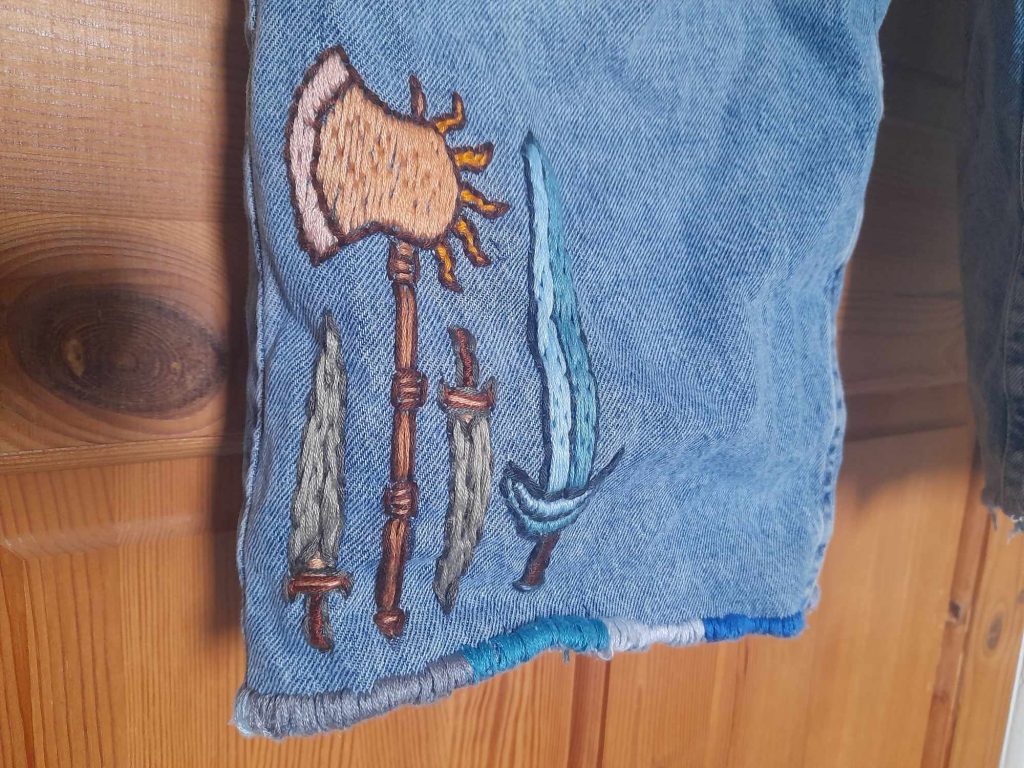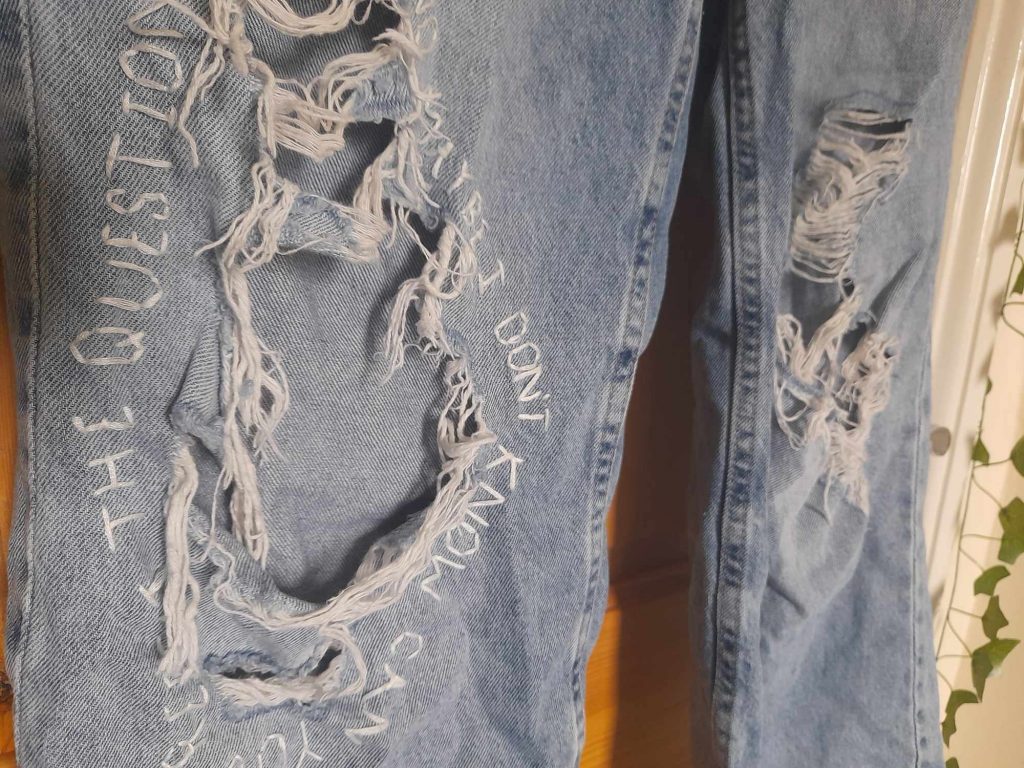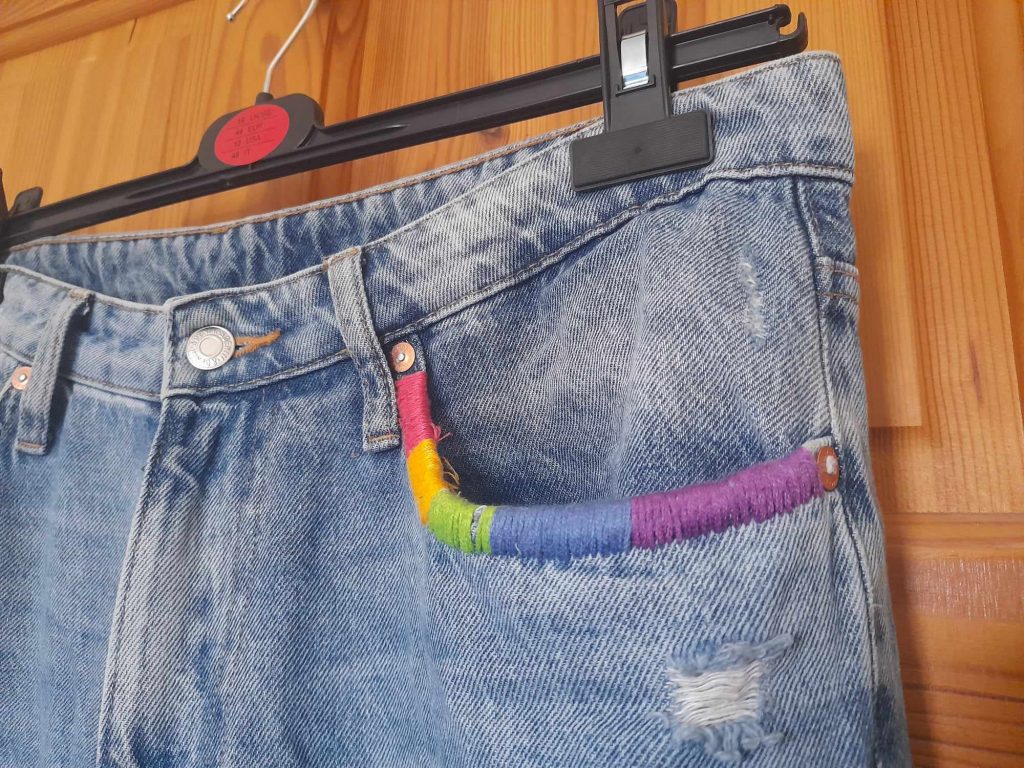Clothes hold a lot of memories and nostalgia, so its hard to get rid of them when they’re no longer in use. Personally, I separate mine into two wardrobes – the one I use daily, and one that I use so infrequently that when I do a charity shop run, I know with confidence that I haven’t touched those clothes in about a year.
But sometimes, those wardrobes can overflow. Your clothes might take up too much space in your home, or maybe they’re just full of old items that you don’t really wear anymore but perhaps spent a little too much money on to feel good about getting rid of just yet.
Today, we’re looking at five different things you can do with your old clothes (and yes, one of them will be the charity shop).
Upcycle
When was the last time you bought a tie dye kit, sat on some grass, and dyed your old t-shirts all the colours of the rainbow? It’s more satisfying than you think, and one kit goes a long way. Tie dye parties are all the rage, you know. And if you don’t want to buy a kit? I’d bet you’ve got some bleach in a cupboard somewhere – mix it with water in equal parts, put it in a spray bottle, and you can make the same tie dye effect just by lifting the colour of the fabric.
If that’s not for you – YouTube has thousands of upcycling videos, from t-shirt cut outs to full flips of clothes into something new, no matter what your talent level is.
Want your blue top to be white? Leave it in a bowl of the above bleach mix for a few hours. Not happy with how long your t-shirt is? Make a crop top! Use one of your existing shirts as a guide.
There are so many ways you can reinvent that denim jacket you haven’t worn in two years before you decide to throw it out.
Resew
When I was a child, I watched my mother spent two weeks turning a pair of jeans into a handbag. It was the coolest bag I had ever seen, and very 2000s. Still, there are so many ways to resew your clothes into something new, especially if you have an old sewing machine or a lot of patience with a needle.
Have you seen those cool quilts made from t-shirts? Making one of your own is a lot simpler than it seems!
Check out thrifted flip videos on YouTube to see how people reuse the fabric of that old pair of trousers to make something new. You, too, could resew the hemline you’re not happy with, or learn how to install a zip when yours is broken.
(And if you can’t – you almost certainly have a friend who can sew, or a local repair café to visit!)

Rags
So your t-shirt is too ruined to be given away to charity, to be upcycled or resewn into something new? Looks like you’ve just found yourself a reusable dust rag. Cut it up into squares (a good rotary blade or jagged-edged scissors will help stop fraying if you come across that problem) and you’re all good to go. A new rag, a new tea towel – they can be washed and reused again and again, and lessen the amount of disposable cloths you’re purchasing at your local supermarket.
Skill-build
I once had a favourite pair of jeans. Then, I bought a new pair, and the first pair was cast aside because the new pair was now my favourite and there was no reason to wear a secondary pair of jeans if the first was available. But—I didn’t like that I was wasting these jeans. Jeans are super water intensive to make, even more so than cotton t-shirts. And there were things I didn’t like about the jeans that were potentially fixable – they were too long, so the hem had to be rolled up and wouldn’t stay up; they were a blander shade of blue than the new ones.
This pair of jeans – and we all have one, probably – is perfect for skill building. I call them my Experiment Jeans, and it’s the pair I go to in order to learn new skills before I attempt them on something I’m afraid of ruining.
Sewing words? I wrote them around the knee hole.
Lino printing? I tested each stamp on the pocket with fabric inks before trying it out on a tote bag.
Embroidery? I used a lino printing stamp to mark out the design and followed an online tutorial to get it right.
Hemming? Well, I actually failed at hemming by cutting the legs a little too short, so instead I sewed all around the edge in different embroidery threads and made a cute and unique end to my jeans that holds.
You’re never going to learn a new skill if you don’t practice – and your old clothes are the perfect guinea pig to test on.



Image descriptions: 1. the bottom of a jeans leg, where four weapons have been embroidered, and the hem has been looped with stitches. 2. words stitched around the knee hole of a pair of jeans. 3. looped stitches in a rainbow around the top hem of a jeans pocket.
Give away
If after all that, you no longer want your old clothes – then to the charity shop they go. All good, resuable items should be taken to your local charity shop, where they’ll be sorted and resold. However, if your clothes are torn, or not in good shape, they could end up in a landfill – so instead, find your closest Dunelm or H&M, and take them there. And that’s not just for clothes, but all textile fabrics like curtains or pillow cases. If they’re in good enough condition to be sold on, they will be – but if they’re not, they might be reused for rags or shredded for insulation.
Perhaps now we’re into Spring, your Spring cleaning could include going through your old clothes and finding a way to either give them that new lease of life or send them on their way to their new home. I, personally, use the KonMari method of tidying, as designed by Marie Kondo in her book The Life Changing Magic of Tidying Up – and I highly recommend giving it a go! Bring all your clothes out into one space, hold each item, and determine if it brings you joy. If it does, keep it for a little longer – if it doesn’t, then thank it for serving you so well and get it gone!
Do you upcycle or fix your clothing? Is there anything you can do with old clothes that I missed here? Let us know in the comments!
By Bethany Climpson, Sustainability Engagement Assistant
 Sustainability
Sustainability Bethany Climpson
Bethany Climpson 742
742


